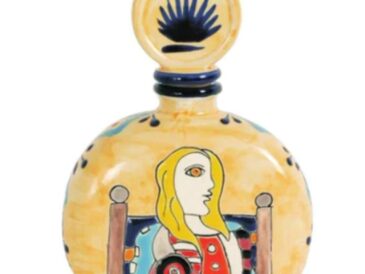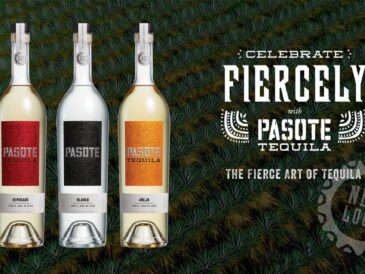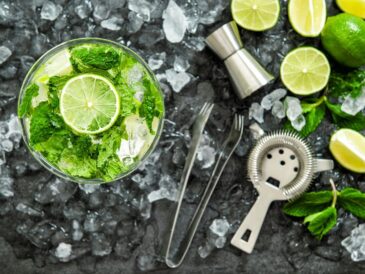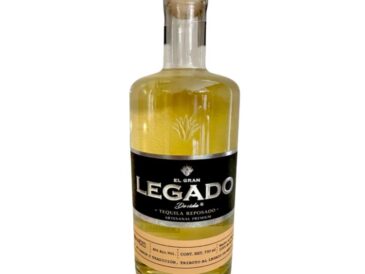Mike Morales is the Master Catador and leads the Tequila Aficionado Tasting Team (TJs). In addition, he is responsible for the annual judging of the Tequila Aficionado Brands of Promise Awards and represents Tequila Aficionado on the tasting/review show, Sipping Off the Cuff.
When he isn’t busy filming episodes of Sipping Off the Cuff or providing consulting services to agave spirit brands, Mike devotes his time to actively mentoring students enrolled in the Tequila Aficionado Consumer Catador Course.
What inspired you to become a Master Catador of Tequila?
After over 20 years of tasting tequila and other agave spirits during my career with Tequila Aficionado Media, we decided to compile a tequila-tasting techniques and education book called the Consumer Catador Course.
I have studied and trained under several Master Distillers, academics, scientists, chemical engineers, and even excommunicated members of the original Mexican Tequila Academy.
This was simply a natural progression for me.
How do you distinguish the various flavors and aromas in tequila?
As mentioned above, I’ve studied with many masters over the years. Experience is a great teacher, too.
It wasn’t until I met famed agave expert Dr. Ana Valenzuela and interviewed Master Distiller Ana Maria Romero Mena (responsible for such iconic brands as Corrido, Volcan de mi Tierra and Mijenta, among others) that I got serious about dissecting the flavors and aromas of tequilas.
Ana Maria, in particular, has been instrumental to us in furthering our training.
A translated version of her official tequila aroma wheel is included in our Consumer Catador Course materials.
Please share a bit about your process for evaluating and rating tequilas.
When rating tequilas, most people must know that the original Mexican Tequila Academy already devises a rating system.
Unlike the 100-point system employed in everything from wines and spirits competitions to even cigars, this system is based on a 20-point scale.
Judged on the three main elements of tequila tasting (sight, aroma, and taste), we tally up the brand scores of our seasoned crew of tasters for our year-end Brands Of Promise(c) Awards.
What are some common misconceptions about tequila that you would like to dispel?
I have seen so many misconceptions dispelled over the years: the tequila worm, the origin story of The Margarita, and the meaning of Cinco de Mayo, for instance.
These days, influencer marketing on social media channels is the biggest culprit of misconceptions, misinformation, and disinformation about tequila and agave spirits.
So-called “experts” with large followers are guilty of spreading rumors and inaccuracies. Fake headlines from what used to be reputable publications are also guilty. And let’s not forget celebrity spokespeople endorsing juice that they know nothing about.
The bottom line is don’t let an app, an algorithm, a movie star, or even someone who calls themself a “coinnessuer” tell you what to drink.
Do your research and trust your taste buds.
In your opinion, what makes a truly exceptional tequila?
It sounds like a cliche, but it truly is the hand of the maker: the master distiller, the chemical engineer, and the family member in charge of producing the final product.
The pedigree and integrity of this person and how closely they adhere to their family’s values and intentions also count. In addition, years of experience in their craft should be considered, as well as their approach to innovation within the category.
Suppose these qualities and other intangibles are present and align with those of the discerning consumer. In that case, these qualities will translate into the juice, no matter what growing region it comes from.
How has the tequila industry evolved since you first started your career?
Once the Internet became accessible to the world, so was industrial modernization in the Tequila Industry.
Copper pot distillation is being replaced by stainless steel; stainless steel vats are instead of wooden ones for fermentation; autoclaves are replacing stone brick ovens; column still distillation to speed up the process. And then, there’s the dreaded diffuser in place of the shredder and tahona.
With the rising global interest in tequila, the diffuser makes it easier for transnational distillers to meet that demand. As a result, the blue Weber agave is being stretched to its limits.
Gone are the days when 7 to 8-year-old agave was harvested to make tequila. Instead, harvesting 2 to 4-year-old plants is the norm–five, if you’re lucky.
We’ve seen a definite consumer migration to other agave spirits (mezcals, bacanoras, sotols, Casillas, and now, destilados de agave) as they seek more complexity and depth in their favorite tipple.
These agave spirits have inspired mixologists to create more signature cocktails. And, since the pandemic, the rise of the Ready-to-Drink (RTD) and Super Premium categories have grown exponentially.
Can you share interesting stories or experiences while working in the tequila industry?
As a consultant, most of the stories I’ve witnessed are not heartwarming but gut-wrenching.
Success stories are few and far between. The allure of becoming the next Patron is more powerful than the actual reality.
As brands become more promising in the marketplace, they will likely be exposed to the seedy underbelly of the current system of spirits distribution. It’s a tough business without a real plan and sufficient funding.
There’s that exception to the rule every once in a while. And when that happens, it’s exciting to watch.
What advice would you give someone just starting to explore tequila?
Whether you’re an average consumer or a would-be brand owner, taste as many brands as possible.
Educate yourself by reading classic books on all sorts of agave spirits. Of course, I would include the Consumer Catador Course in your educational materials.
Attend functions where the distiller and the brand owner are present. Please get to know them, interview them, and don’t be afraid to ask them hard-hitting questions.
Lastly and most importantly, visit as many tequila distilleries or mezcal palenques as possible.
How do you see the future of tequila and the wider spirits industry?
It might survive if the industry can hit the brakes on this runaway train. Otherwise, I fear it will implode on itself like an old casino on the Las Vegas Strip.
Speaking only on the market’s Agave Spirits sector, Tequila is just the tip of the iceberg. There is plenty of room for growth and exploration.
Be fearless in your explorations and try to get ahead of the herd before the corporate distillers do.
Can you recommend a few of your favorite tequilas for someone looking to try something new?
At Tequila Aficionado Media, we’ve always sought start-ups and profitable brands.
Many of the following brands that we’ve tasted this year thus far (in no particular order) are still young and agile enough to incorporate new and cutting-edge methods to distinguish themselves from the mainstream cookie-cutter brands:
- Siempre Vivo High Proof Blanco
- Nosotros aged in whiskey/cider barrels
- Inspiro Rosa Reposado
- Don Rico double barreled Añejo
- Querendon Blanco and Reposado
- O & R Estoico Indigo Blanco and reposado
- Cardenas Legacy Blanco and reposado
- Juan de Leon (all expressions)
- Bajarriba Blanco and reposado
- Kateri Reposado




